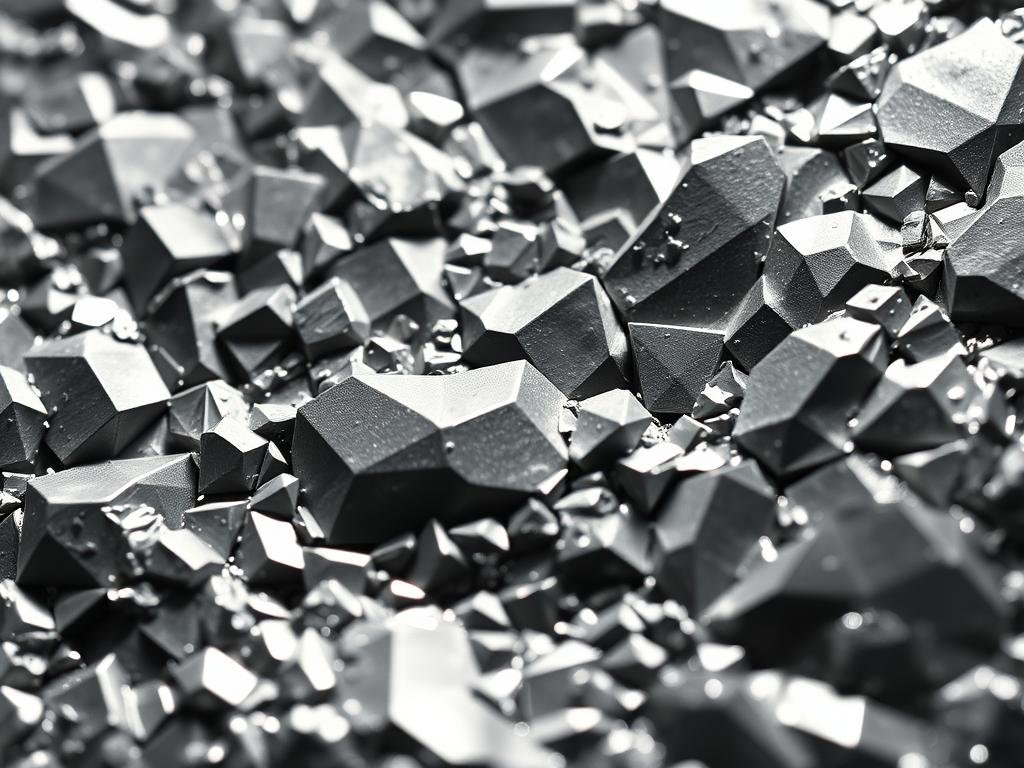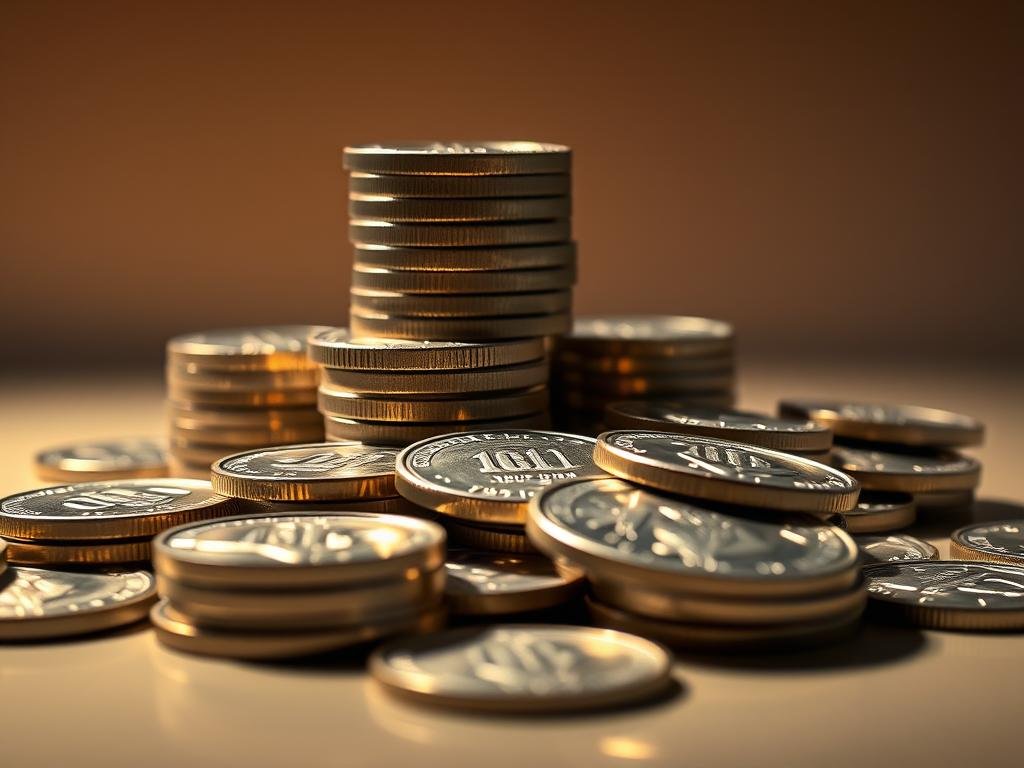Silver is one of the most versatile and valued precious metals in the world, with its unique density playing a crucial role in determining its value and applications.
The density of silver is 10.49 grams per cubic centimeter (g/cm³), which is relatively high compared to common metals like copper and nickel but lower than gold.
Understanding the physical properties of precious metals like silver is essential for investors, collectors, and industrial users. It provides insights into the metal’s authenticity, purity, and potential applications, making it a crucial aspect of evaluating its weight and mass.
This comprehensive guide will explore how silver’s density influences its market value and industrial utility, comparing it to other metals and examining the factors that affect its density.
Understanding the Density of Silver
Understanding silver’s density is crucial for appreciating its value and authenticity. Density is a fundamental physical property that can reveal a lot about a material’s composition and characteristics.
What Is Density and How Is It Measured?
Density is defined as mass per unit volume of a substance. It’s typically measured in grams per cubic centimeter (g/cm³). To measure density, one must know the mass and volume of the object.
Silver’s Density: 10.49 Grams per Cubic Centimeter
Pure silver has a density of 10.49 grams per cubic centimeter. This value is a result of silver’s atomic structure and its face-centered cubic crystal lattice. The density of silver is higher than common metals like copper but lower than gold.
- Pure silver’s density is precisely 10.49 g/cm³, making it denser than many metals.
- A 1 cm³ cube of pure silver weighs exactly 10.49 grams.
- The consistent density of silver provides a reliable benchmark for verifying its authenticity.
Silver Density Compared to Other Metals
Understanding how silver density compares to other metals is crucial for investors and enthusiasts alike. Silver’s density is 10.49 grams per cubic centimeter, which is significantly different from other metals.
How Silver Compares to Common Metals
When comparing silver to common metals, its density is higher than aluminum (2.7 g/cm³) and copper (8.96 g/cm³) but lower than lead (11.34 g/cm³). This comparison is essential for understanding the physical properties of silver in various applications.
Silver vs. Other Precious Metals
Among precious metals, silver occupies a middle position in terms of density. Gold has a density of 19.32 g/cm³, and platinum has a density of 21.45 g/cm³, making them significantly denser than silver. On the other hand, palladium, with a density of 12.02 g/cm³, is only slightly denser than silver. The substantial density difference between silver and gold (nearly 2:1) has historically made gold more convenient for high-value transactions in smaller physical packages.
The density difference explains why a one-ounce gold coin is noticeably smaller than a one-ounce silver coin, despite containing the same mass of metal. For investors, understanding these density relationships helps explain the physical differences between precious metal products of equal weight but different compositions.
Factors Affecting Silver Density
Understanding the factors that affect silver’s density is crucial for various applications, from industrial manufacturing to investment-grade products.
Temperature Effects on Silver Density
Temperature significantly impacts silver’s density. As temperature increases, silver expands, reducing its density. Conversely, decreasing temperatures cause silver to contract, increasing its density.
Purity and Its Impact on Density
The purity of silver also affects its density. Pure silver has a density of 10.49 g/cm³, but the presence of impurities or alloying elements can alter this value. For instance, sterling silver, which is 92.5% silver, has a slightly different density due to the presence of other metals.
Pressure and Structural Changes
External pressure can significantly affect silver’s density. Under high pressure, the atoms are packed more closely, increasing density. For example, under extreme pressure, silver’s density can increase.
| Factor | Effect on Density |
|---|---|
| Temperature Increase | Decreases Density |
| Purity | Impacts Density Based on Impurities |
| Pressure Increase | Increases Density |

Silver Alloys and Their Densities
Silver alloys are mixtures of silver with other metals, designed to enhance its properties for various applications. These alloys are crucial in industries where pure silver’s properties need to be modified to suit specific requirements.
Sterling Silver: Composition and Density
Sterling silver, a popular silver alloy, contains 92.5% silver and 7.5% other metals, usually copper. This composition gives sterling silver a density of approximately 10.3 g/cm³, making it more durable than pure silver while retaining much of its desirable properties.
Other Common Silver Alloys
Beyond sterling silver, other alloys exist with varying densities. For instance, coin silver, with 90% silver and 10% copper, has a density of about 10.31 g/cm³. Britannia silver, containing 95.8% silver, has a density closer to pure silver at approximately 10.42 g/cm³. Modern alloys like Argentium silver offer improved tarnish resistance and maintain a similar density to sterling silver.
How Density Determines Silver Authenticity
The authenticity of silver is often verified by its density, a crucial factor in distinguishing genuine silver from counterfeit products. Density testing is a reliable method for identifying counterfeit silver because it exploits the significant differences in density between silver and common base metals used in counterfeits.
Density Testing Methods for Silver
Density testing involves measuring the weight and volume of a silver item to calculate its density. This can be done using simple tools like a balance and a graduated cylinder or more sophisticated equipment like hydrostatic scales. By comparing the calculated density to the known density of silver (10.49 g/cm³), one can verify its authenticity.
Identifying Counterfeit Silver Through Density
Counterfeit silver products often use metals like zinc (7.14 g/cm³), tin (7.31 g/cm³), or lead (11.34 g/cm³), which have densities significantly different from that of genuine silver. Even sophisticated counterfeits with a silver coating over a base metal core can be detected through density testing, as the overall density will not match that of solid silver.
| Metal | Density (g/cm³) |
|---|---|
| Silver | 10.49 |
| Zinc | 7.14 |
| Tin | 7.31 |
| Lead | 11.34 |
By understanding how to perform basic density tests, collectors and investors can protect themselves against counterfeit silver products. The relationship between an object’s weight and volume provides a mathematical signature that’s difficult to falsify without using genuine silver.
Silver Coins and Bullion: Density Considerations
Silver coins and bullion are popular investment options, with their density being a key factor in their authenticity and value. The density of silver, at 10.49 grams per cubic centimeter, remains consistent across various products.
Popular Silver Coins and Their Specifications
Popular silver coins, such as the American Silver Eagle and Canadian Silver Maple Leaf, adhere to strict minting standards, ensuring their density matches that of pure silver. These coins are typically minted with a high purity level, guaranteeing their density is very close to 10.49 grams per cubic centimeter.
- American Silver Eagle: .999 fine silver
- Canadian Silver Maple Leaf: .9999 fine silver
Silver Bars and Investment-Grade Products
Silver bars, ranging from 1-ounce to 1000-ounce sizes, maintain the standard density of silver. The Good Delivery standard for silver bars, established by the London Bullion Market Association, specifies a minimum purity of 99.9% silver, ensuring consistent density. Reputable refiners like PAMP Suisse and Johnson Matthey maintain precise density specifications.

Industrial Applications Leveraging Silver’s Density
Silver’s density plays a crucial role in various industrial applications, enhancing performance and durability across multiple sectors.
Electronics and Electrical Components
Silver is extensively used in electronics due to its high conductivity and durability. In photovoltaic cells, silver’s density and conductivity properties are utilized to create durable electrical contacts that maintain performance over decades.
- Silver’s high conductivity makes it ideal for electrical components.
- Its durability ensures longevity in demanding applications.
Renewable Energy and Medical Applications
In renewable energy, silver’s density supports consistent performance in solar cells. Medical devices also benefit from silver’s unique combination of density, antimicrobial properties, and biocompatibility.
- Silver is used in water purification systems for its antimicrobial properties.
- Batteries and energy storage technologies incorporate silver for its density and conductivity.
The Relationship Between Silver Density and Value
Understanding the relationship between silver density and its value is essential for investors. The density of silver, at 10.49 grams per cubic centimeter, serves as a fundamental property that can significantly impact its market value.
How Density Affects Market Pricing
The density of silver influences its market pricing by serving as a benchmark for authenticity and purity. Investors often rely on density measurements to verify the quality of silver products, thereby affecting their willingness to pay a premium for high-quality items.
Density as a Quality Indicator for Investors
For serious investors, silver’s consistent density is a primary quality indicator. Investment-grade silver products maintain strict density specifications, providing a quantifiable purity assessment that helps investors make informed decisions.
As noted by industry experts, “The relationship between a product’s measured density and the theoretical density of pure silver is crucial for verifying its authenticity.” Understanding this property not only ensures confidence in purchases but also highlights silver’s reliability as a tangible asset.
Practical Tips for Measuring Silver Density at Home
With a few simple measurements, you can determine the density of your silver items and avoid costly mistakes. Measuring silver density involves calculating its weight and volume.
Simple Tools and Techniques
To measure silver density, you’ll need a precise scale and a way to measure volume, such as water displacement. Ensure the silver object is completely wetted and bubble-free to get accurate results.
Common Mistakes to Avoid
When measuring silver density, avoid common pitfalls such as using imprecise scales or neglecting temperature considerations. Be aware that complex shapes or hollow components can lead to inaccurate volume measurements. Additionally, don’t expect exactly 10.49 g/cm³ for all silver products, as alloys like sterling silver may vary.
- Ensure accurate weight measurements using a precise scale.
- Use water displacement to measure volume, avoiding air bubbles.
- Consider the temperature during measurement.
Conclusion: The Significance of Understanding Silver Density
The significance of silver’s density extends far beyond a simple physical property. It is a cornerstone of its value, versatility, and authenticity. With a precise density of 10.49 grams per cubic centimeter, silver’s characteristics make it invaluable in various applications, from coins and jewelry to electronics and renewable energy.
Understanding silver density provides a powerful tool for verifying authenticity and assessing quality. As technology advances, the relationship between silver’s density and its industrial applications continues to evolve, creating new demands for this versatile material. For investors, collectors, and manufacturers, silver’s density remains a constant physical property that grounds its value in measurable reality.
